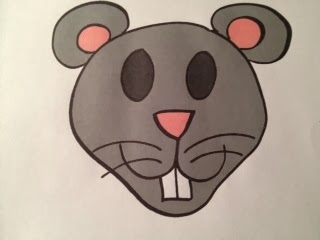As this is all about a party , last year I based some simple Year 3 language learning on party games based upon animals.
Listen,imagine and explore the kingdom of the animals.
Well last year before looking at some of story- as it's a long story " au carnaval des animaux "or "el carnaval de los animales" , we listened to some special music by Saint Saens "au carnaval des animaux" to see if we could imagine the animals that might be in the music.We then went on an animal thought walk .
- Which animals did we already know in the target language?
- Which animals did we like?
- Which animals might be in the story?
- Which animals might we need to look up in a bi-lingual dictionary because we think they may be in the story?
...and then we made our own freeze frame pictures of the animals we had discussed.I called out an animal in the target language and the children took the pose of the animal .They had to stand very still for a count of ten ...or they were out and had to sit down and be a freeze frame statue judge with me.
We took a vote on our top ten invite animals to the animal party and made a tally chart with the written target language noun at the top of each column.
We wrote out the words for the top seven animals we wanted as a class to invite to the party
We lined our top seven animal words up in alphabetical order - ready for party invitation printing....
....and then as a class we investigated soe of the story.What happened to the animals as they put on their fancy dress?
We took the first five animals and their fancy dress and listened a second time to these pages of the story and drew the animals in the air- as they appeared before the fancy dress and then with the fancy dress.
We looked through the story for the magical fairy tale characters and played Simon says with the names of the animals and the fairy tale characters and actions we agreed upon to represent each character.(I didn't do this but wish i had ... and this was to create posters of the fairy tale characters with their eyes/nose/hair/teeth etc made up by different parts of different animals )
C Our challenge was to get the animals we had chosen to the party!
I gave out animal name cards and asked the children to remind me of the names they knew of animals and what had happened in the story book.
We listened again to some of the music from Saint Saens.Take a look at my original blog post on this theme
I asked the children to pass the names of the animals around a seated circle until I paused the music and then they had to mime the animal on their card for the person sat next to them.Could the person guess the animal? We then carried on with the game.
We then played a memory chain game .We looked at our top seven animals for the party and practised with a partner the names and the actions for the animals.seven volunteers were then lined up at the front and each children had to try to say a different name of an animal .They could phone a friend for help too. Once the children were confident then it became a one against one play off of the game at the front- two children saying animal nouns in turn...who would dry up first?
The sound -spelling of the animals
We played several sound -spelling games:
Animal sounds - walking round the room with a letter string card from the nouns of the animals , quietly saying the sound of the letter string to find other children with the same sound.Once all the children are gathered in to their correct groups- each group shouts out their sound and the class decides which animal picture displayed at the front of the classroom this sound belongs to.
Build the animal
I divided the nouns for the animals into letter strings- preferably two per animal noun.All the children had a card with a letter string written on it from an animal noun on it.They walked around the room and found someone who had the other letter string so that put together it became a complete animal noun.Once they had found the whole word, they had to draw on a mini whiteboard a quick picture of the animal and sit down with their hand up.Who would be first or last to do this?
I used my game "Open and reveal" to anticipate the name of the animals and to link the learning to other familiar language
Making masks and practising the key phrase to explain the disguise
....and then we made our animal masks,ready for our Saint Saens carnival parade.
We practised the key phrase from the book in the target languages "I am disguising myself as...." and used our "animal" voices (voices that sounded like the animals).
If I make them again I think that we should have two animals on each mask....who the children want to be before the fancy dress and on the reverse the animal they want to disguise themselves as.


No comments:
Post a Comment